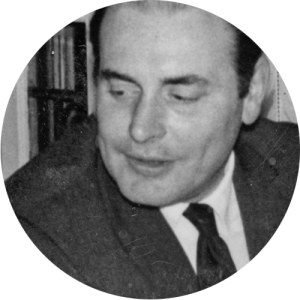Disderot
DISDEROT
COLLECTIBLE LIGHTINGS
DISDEROT 2017
When the lighting company Soka bought the Ateliers Pierre Disderot in 1984 to become Soka Disderot, it was with the idea of perpetuating the work of one of the greatest French luminaire companies.
Today, its current leaders, faithful to the founding values, re-issuing few mythical models conforming to the originals, identical to the smallest details under the brand Disderot.
Disderot perpetuate the timeless spirit of French creation from the 50s to the 70s with this made in France collection, respecting the tradition and quality. Gathering wall light, lamps, ceiling lamps and desk lamps.
Each edited model is numbered and accompanied by a certificate of authenticity.
This collection of the greatest French designers from the 1950s to the 1970s resurfaced the creations of the Ateliers Pierre Disderot with respect for original works and craftsmanship.
LES ATELIERS PIERRE DISDEROT
COLLECTIBLE LIGHTINGS

PIERRE DISDEROT
He opened his first studio in Cachan in 1948 and his first works are marked by the classic modernism typical of the bronzers of the late 1940s but do not fit well with his progressive spirit.
It is his meeting with one of the masters of modernity of that time, Marcel Gascoin and his young team of the ARHEC (rational development of housing and communities) including Michel Mortier and Pierre Guariche who is at the origin of the radical turning point. From this collaboration come models recognized today as the greatest successes of the 1950s.
His partnership with members of the ARP (Plastic Research Workshop), Pierre Guariche, Joseph-Andre Motte, Michel Mortier but also Alain Richard gives birth to a multitude of models that reinvent the lighting of the house. The technique of metal bends to their aesthetic vision itself in the service of a functional requirement.
One of his strengths is to be able to understand the novelty and the interest of the modernity of the proposals of these young creators because he is himself an excellent designer of models. All his life, he will design lighting fixtures that will have nothing to envy to those of his teams. Many of his luminaries, as well as those of Guariche, Motte, Richard and Mortier appear in the most beautiful museums and unleash the enthusiasm of collectors.
Pierre Disderot adheres to the project of bringing together furniture, seating and lighting editors who share this same conception of modernity and their joint publicity is a manifesto. These are, for example, the magnificent shops of Charles Minvielle architected and directed by Dirk Jan Rol.
The activity of the workshops is a great success and Pierre Disderot has the collaboration of Pierre Paulin, Jacques Dumont, René-Jean Caillette, then in the 60’s Etienne Fermigier, Roger Fatus, Olivier Mourgue and then François Arnal.

Pierre Disderot- Salon du meuble, 1966
Beyond this edition of models, the Disderot workshops respond to numerous bespoke orders from interior designers or architects and win prestigious private and public commissions such as the France liner, Orly airport, UNESCO or Paris. House of the radio.
If the workshops have up to 80 people, the sale remains craft and most orders are taken at the Salon des arts ménagers. In 1967-68, the factory expanded and moved to Choisy-le-Roi, the warehouse are large, subtly organized by Alain Richard who was also the creator of the graphic charter and Disderot catalogs.
Always in search of the tip of modernity, Pierre Disderot buys licenses for new products such as this acetate thread glued by a drip of acetone on a wooden mold that gives birth to the brand Rotaflex under the direction of his Brother Jean Disderot. Pierre Guariche, Joseph-Andre Motte, Michel Mortier and of course the ARP seize it and produce some of the most beautiful models in this famous modern material, bright, unbreakable, easy to clean and with the light is so warm. The simplest of these consumer models were produced in large series because they were not expensive.
Pierre Disderot sold his workshops in 1984 and devoted himself to teaching and union activities. He died in 1991.
